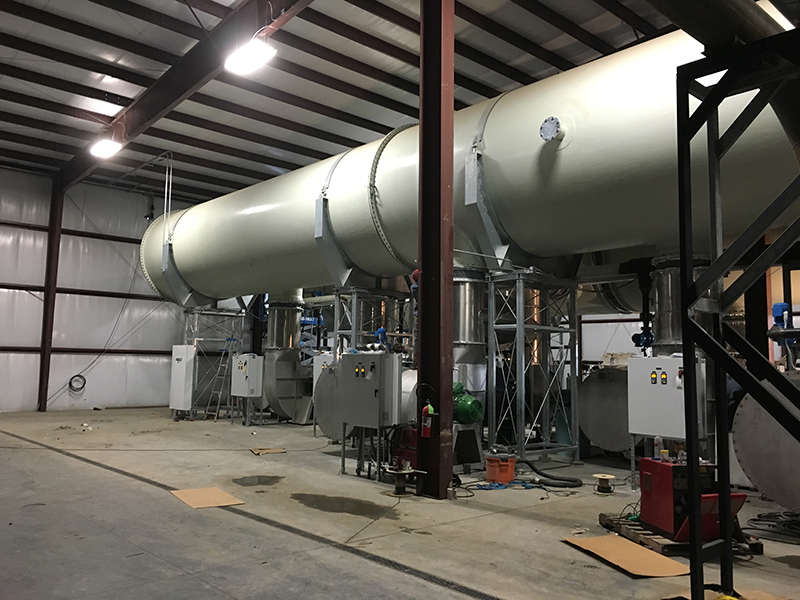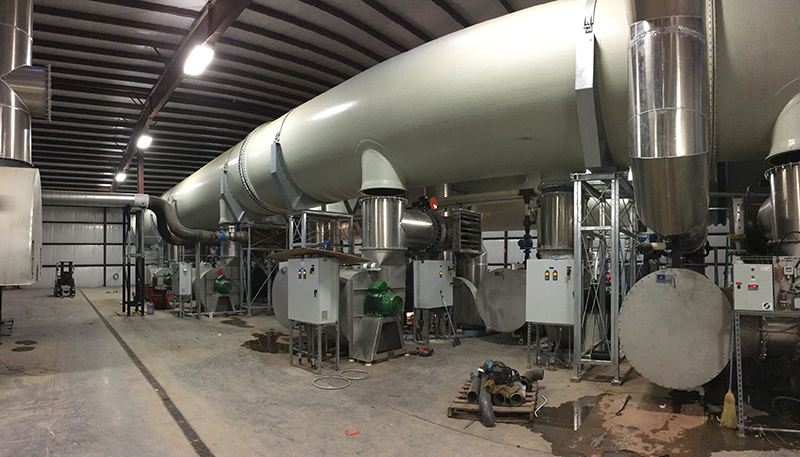The difference between waste heat and residual heat
The difference between waste heat and residual heat is that the production of residual heat requires an additional amount of fuel. Waste heat is difficult to utilize because it is a maximum of 30 degrees Celsius, waste heat is delivered at a higher temperature level and therefore can be put to good use.
The function of a flue gas duct
A flue gas duct is used to transport heat and CO2 from a power plant to the greenhouse. First, a flue gas condenser ensures that the flue gases are cooled down to the dew point. In this way, the condensation heat in the flue gases is optimally utilized. This heat can be used to heat water. Next, the flue gases (which mainly consist of CO2) are cooled down enough to be used in the greenhouse.
Cost savings with a flue pipe
By using the residual heat from the power plant, the boilers do not have to run. This can provide significant savings since 100% of the heat and CO2 required for the greenhouse can be supplied from the power plant through the flue gas duct. In practice, however, backup boilers are installed to reduce risks. For example, should there be a power plant failure, the backup boilers take over the heating and CO2 production. This prevents damage to the crop.
Furthermore, the savings can increase further depending on local regulations regarding greenhouse gas emissions.
Flue gas ducts from Enerdes
Enerdes has developed a unique flue gas duct for Houweling’s Tomatoes Greenhouse in Mona, Utah. All the heat and CO2 needed in the greenhouse comes from the adjacent power plant through the flue gas duct. Among other things, this innovation led to the Energy Innovator of the Year Award. Read more about the project for Houweling’s Tomatoes Greenhouse in Utah.
When do flue gasses condense?
The further the flue gases are cooled back, the higher the efficiency. If the temperature of the flue gases drops below the dew point, extra heat is released through condensation of the moisture in the flue gases. If condensation does not take place, the water vapour disappears with the heat from the chimney into the atmosphere. Water vapor that does not condense in the condenser is lost energy. This energy disappears from the chimney into the atmosphere. Recovering the heat of evaporation makes better use of the heat of natural gas.
How does a flue gas condenser work?
Behind the boilers in the boiler room are flue gas condensers that cool the flue gases again. The flue gases are led along pipes with cold water. The flue gases give off heat to the water and are thus cooled again. The gas is cooled from 180 to 40 degrees Celsius. At that point, the gases are cold enough to use. After this, the flue gases pass through the CO2 distribution system.
How to save money with a flue gas condenser?
The use of a flue gas condenser has two advantages. First, the cooled flue gas can be used in the CO2 distribution system. This can save a considerable amount on the CO2 bill. Secondly, water can be heated using the heat in the flue gas. With the recovery of the evaporation heat, the heat of the natural gas is better utilized. This gives an advantage on the energy bill.
Why is expert advice important with a flue gas condenser?
The efficiency of flue gas condensers depends on its connection to the right heating network. In addition, several factors must be considered when purchasing a flue gas condenser. For example, many growers suffer from loss of efficiency of a condenser due to a flue gas temperature that is too high.
Flue gas condensers from Enerdes
Our goal is to have your flue gas condenser cool the flue gas back as much as possible. The further the flue gas is cooled back, the higher your efficiency will be. If the heat from the flue gas cannot be utilized, it is still advisable to have the unit cooled as much as possible to avoid problems with moisture in the CO2 distribution system.










